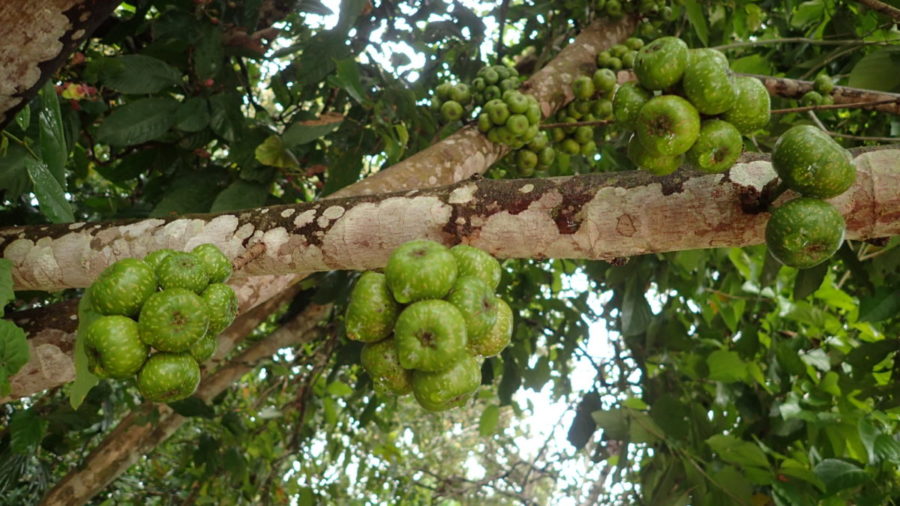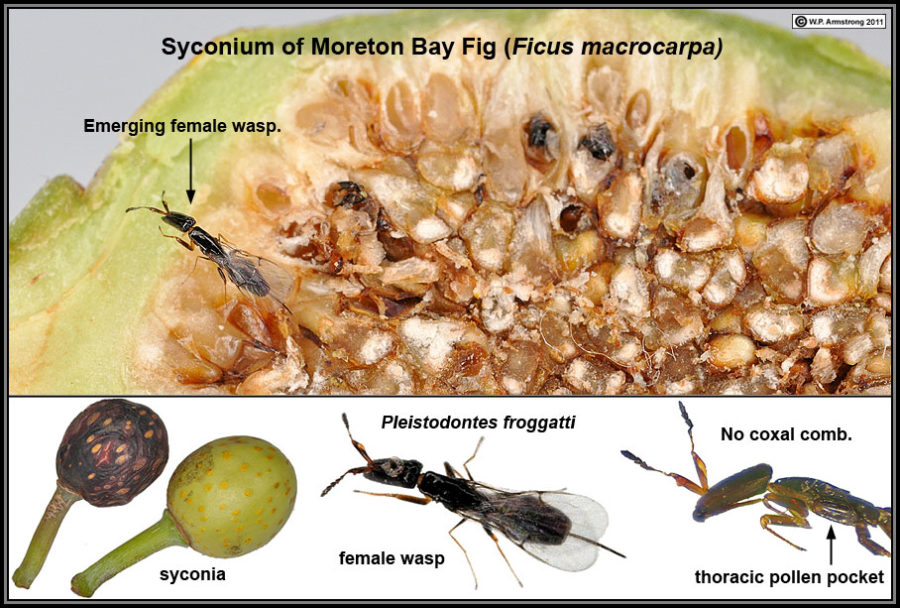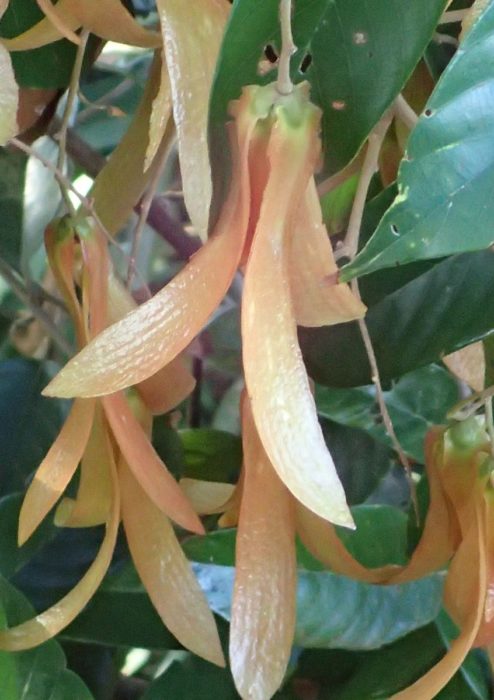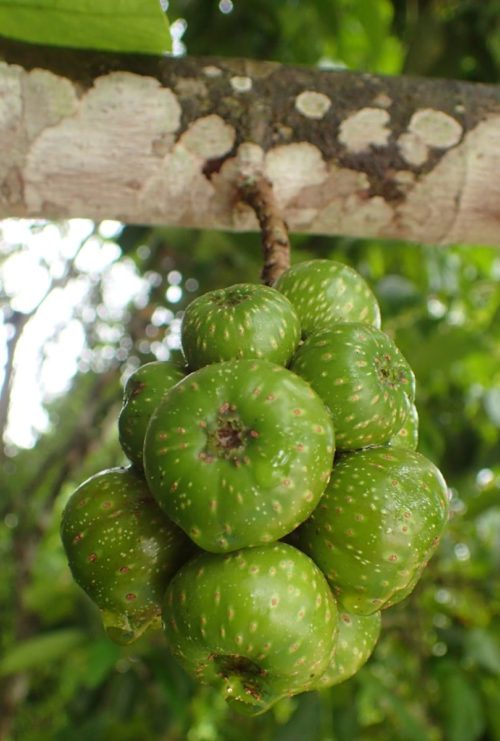
On our last day of University of San Francisco’s Tropical Restoration Ecology class, we were graced with an impromptu lecture by Dr. Wong, found and director of the Bornean Sun Bear Conservation Centre. I was expecting to hear more about sun bears or other conservation topics. It was to the delight of this plant person that for the next hour and a half we were immersed in fig pollination biology and the importance of these trees to Bornean wildlife. I first heard the story of figs and fig wasps during my undergrad studies and we saw many as we worked on restoration of the Kinabatangan River with Kopel in Malaysian Borneo this summer (Figure 1). Rehearing the story in greater detail rekindled the awe I have for nature.
The short version of the story goes something like this: Fig flowers are located on the inside of a structure called a syconium (Figure 2). Figs in the genus Ficus has separate male and female syconia. Each fig species has a symbiotic relationship with one to several species of fig wasps. Female fig wasps search for a fig syconium to lay her eggs. Male syconia are structured in such a way that allows female fig wasps to lay their eggs and reproduce. Female syconia have a long style on their flowers that prohibit the female fig wasps from laying eggs. Female fig wasps that enter into the female syconia will pollinate the fig flowers and a fig fruit will develop.


A reoccurring theme of many guest lectures during our University of San Francisco Tropical Restoration Ecology class encourages planting of fig trees to support wildlife conservation. Figs in Borneo are considered to be a keystone species due to their ability to produce fruit year-round. Most other trees in Borneo undergo what is called mass fruiting or masting. Masting is a synchronous production of flowering and fruiting that is triggered by an environmental stimulus. In Borneo, trees flower and set fruit every four to eight years and are typically triggered by a drought event. Our class happened to coincide with a major fruit masting event and we observed many different types of fruits (Figure 3). Thinking back to our walks through the forest it is hard to fathom there being little to no fruit on the trees for years at a time. Figs truly are an oasis for wildlife in an ecosystem that is regularly a fruit desert.
by Nicole Carpenter
University of San Francisco, MSEM student

